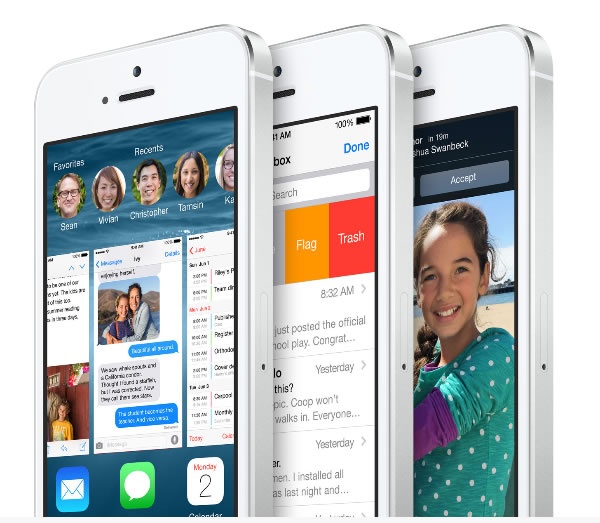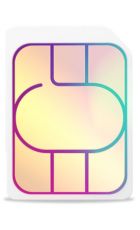
UPDATED: Apple brings iOS 8 to users and puts the iPhone at the centre of everything
Apple announced its new operating system – iOS 8 – at the WWDC keynote held in San Francisco. This OS runs on iPad, iPhone and iPod touch. Plus Apple launched its Mac OS X Yosemite for computers. This is the most entwined the two sides of Apple hardware have ever been.
Consumers will get their hands on the two operating systems in the autumn (for free), while developers have the benefit of access now. These two systems will allow Macs and iPads and iPhones to communicate better than they ever have before. You can view text messages (and reply to them) using the Mac messages app, plus you can take calls from the Notification Center on your Mac, and make calls using the Contacts app.
Making all this a possibility is the Bluetooth connection between Mac and iPhone. It is also easy to share a mobile hotspot – just open the Wi-Fi settings on your Mac and connect to the 3G or 4G data connection of the iPhone using one click. No passwords required.

Fitness tracking introduced
Looking at the iOS 8 system for a moment, it doesn’t look very different to last autumn’s iOS 7, but it does feature a very new facility. Apple has jumped on the health and fitness bandwagon with HealthKit. As of yet, there is no news of a wearable gadget, but instead the HealthKit is a central place where you can monitor all your fitness products – the likes of Jawbone Up, Nike+ FuelBand and so on. Apple has also teamed with the Mayo Clinic to enable patients to be able to share data with doctors – and they can also send updates to their patients’ phones.
This isn’t quite the massive health and fitness move that we were expecting, but we wouldn’t be surprised if a wearable fitness product appeared when iOS 8 and the iPhone 6 appear in the autumn…
Another new feature concerns home automation. This is also known as the Internet of Things – and includes the liles of the Nest smart thermostat and Philips Hue smart lightbulbs.
HomeKit

Apple has just produced an app entitled HomeKit, which allows you to control smart home devices from one central area. And Siri can be used to control HomeKit, so if you say “Siri, time for bed”, the iPhone can be set up to close blinds, turn off downstairs lights and lock doors, if you have the appropriate hardware of course. Apple is teaming up with a broad range of partners – with the exception of Nest, which is owned by Google.
Siri is also able to identify songs with Shazam in iOS 8 – and once a song is identified you can buy it from iTunes through Siri, so you don’t actually have to go in and open up the Store. Connect Siri to your car and it will be listening. So if you’re driving, you just need to say “Hey Siri” to perform tasks, rather than pressing a steering wheel button or handling your iPhone.
Right on key
Apple has also included a new prediction tool called QuickType, which offers up word suggestions as you’re typing. It is quite intelligent as it suggests words depending on who you are talking to and what type of conversation you are involved with. For example, a colleague enquires who your meeting was – QuickType suggests ‘productive’ and ‘great’. A friend asks a similar question and possibilities include ‘epic’ and ‘awesome’. This is the first time that Apple has allowed third-party keyboards to be installed too, offering you the opportunity to use the likes of Minuum and Swype.
Free, and due this autumn

The App store is also getting an update, which means that from the autumn developers will be able to show videos of games and apps along with images. They will even be able to invite a certain number of users to try out new apps for free for beta testing before they officially go on sale.
The Mac OS X Yosemite and iOS 8 operating systems are open to developers now – consumers will be able to get their hands on them for free in the autumn.
Touch ID goes third party
Currently you can only use Touch ID to unlock your phone or authorise purchases on the app store, but with iOS 8 third party developers will have access to it. That means that theoretically any app could implement it in place of a password to login or make an in-app purchase.
Of course it relies on developers making use of it, but in the long run it could bring an end to passwords on the iPhone altogether and while developers will have access to the Touch ID API’s, the actual biometric information from your fingerprint will be locked away on your phone, so no company will ever have access to that and your security will remain intact.
Control Centre Widgets
Control Centre already features calendar alerts and the like, but with iOS 8 third party apps will be able to add widget-like elements to the Control Centre. One example given by Apple is a sports app showing live scores for an event, another is an eBay widget allowing you to keep track of bids without launching the app.
It doesn’t sound quite as in depth or versatile as the widget system on Android, but by relegating them to the Control Centre they don’t clutter up the home screen either.
Other improvements
A few other miscellaneous features and improvements are being added with iOS 8. For example a new Time Lapse mode is being added to the camera, which will basically just speed up videos that you’ve recorded.
Apple is also adding apps to the lock screen, sort of. With iOS 8 certain apps will appear in the bottom left corner of the lock screen depending on where you are. So for example if you pass by a Starbucks then the Starbucks app might appear. You can then launch the app straight from the lock screen, saving you time.
iOS 8 Beta 2
While you’re best off waiting for the official release of iOS 8 later this year it’s worth noting that the second Beta version of it is now available and though it’s designed for developers it is possible to access it even if you’re not a developer.
All you need to do is sign up to the iOS Developer Program, which anyone can do but which comes at a cost of $99 (around £58) per year, which is rather steep if all you want to do is try out an unfinished version of iOS 8.
And it really is unfinished. The various new features are there but it’s highly unstable and buggy, so best avoided really.









